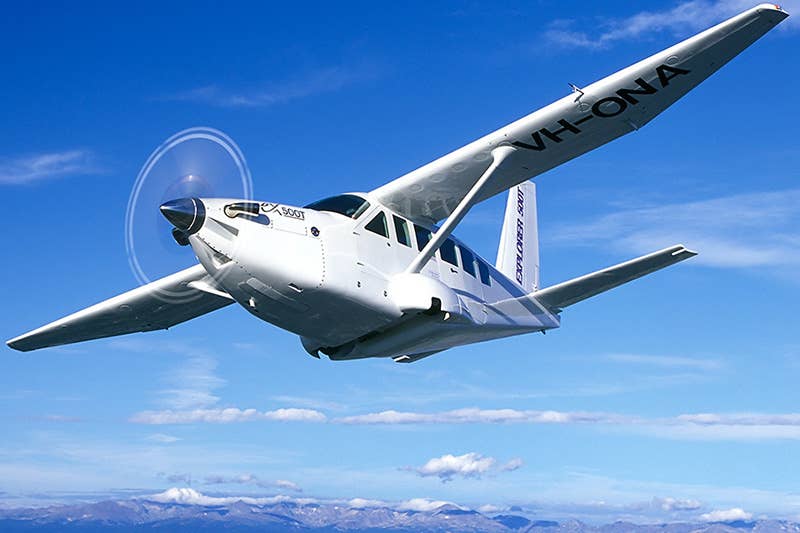
Explorer Aircraft’s 500T is built to fly from community airports and unimproved runways. Explorer Aircraft
Flight testing is underway for Explorer Aircraft’s 500T, the flying prototype of the company’s light utility aircraft.
The all-composite, single-engine design is intended to fly from community airports and unimproved runways. The design can also be equipped with floats for water operations.
According to Bryan Lynch, chief executive officer for Explorer Aircraft Inc., the test flights with the proof-of-concept design are happening near Cheyenne, Wyoming.
“We have 500 hours on the current POC aircraft, but with the new engine, avionics and other systems we will need to fly at least 30 more hours,” he said. “We have installed a new PT6A-140A (upgraded from a 135) engine with a Hartzell prop.”
The firewall-forward installation was done by Scion Aviation. They’re well-known in the aviation industry for their expertise in carbon-fiber prototyping and development of manufacturing tooling.
Lynch said the 500T is designed to accommodate both passengers and cargo.
“The production 500T will have a useful load of 3,200 lbs and a maximum takeoff weight of 6,600 lbs, and 250 cubic feet of interior cargo volume.”
In addition to the more powerful engine, the POC aircraft features new landing gear and flaps designed to provide maximum fuel efficiency and superior low-speed handling.
What Will Be Tested
The flight testing of the prototype will begin with a 40-hour flight program that will demonstrate the platform’s integrity and abilities. The aircraft’s performance capabilities—like minimum takeoff and landing distances, fuel consumption, and flight characteristics—will be determined with the revised systems.
“We are validating our models with the new engine performance and we are going to expand our slow speed handling characteristics,” Lynch said. “For Explorer Aircraft, it is important that we develop an aviation platform that provides our customers a tool to safely and efficiently deliver goods and services to their customers throughout the world, even under the most adverse conditions.”
The production aircraft will be a multipurpose vehicle that’s also been designed to accommodate future advancements in technologies, such as hybrid-electric power and embedded auxiliary power units that will provide substantial electrical energy generation for mobile medical units and other mission-critical equipment.

Subscribe to Our Newsletter
Get the latest FLYING stories delivered directly to your inbox






